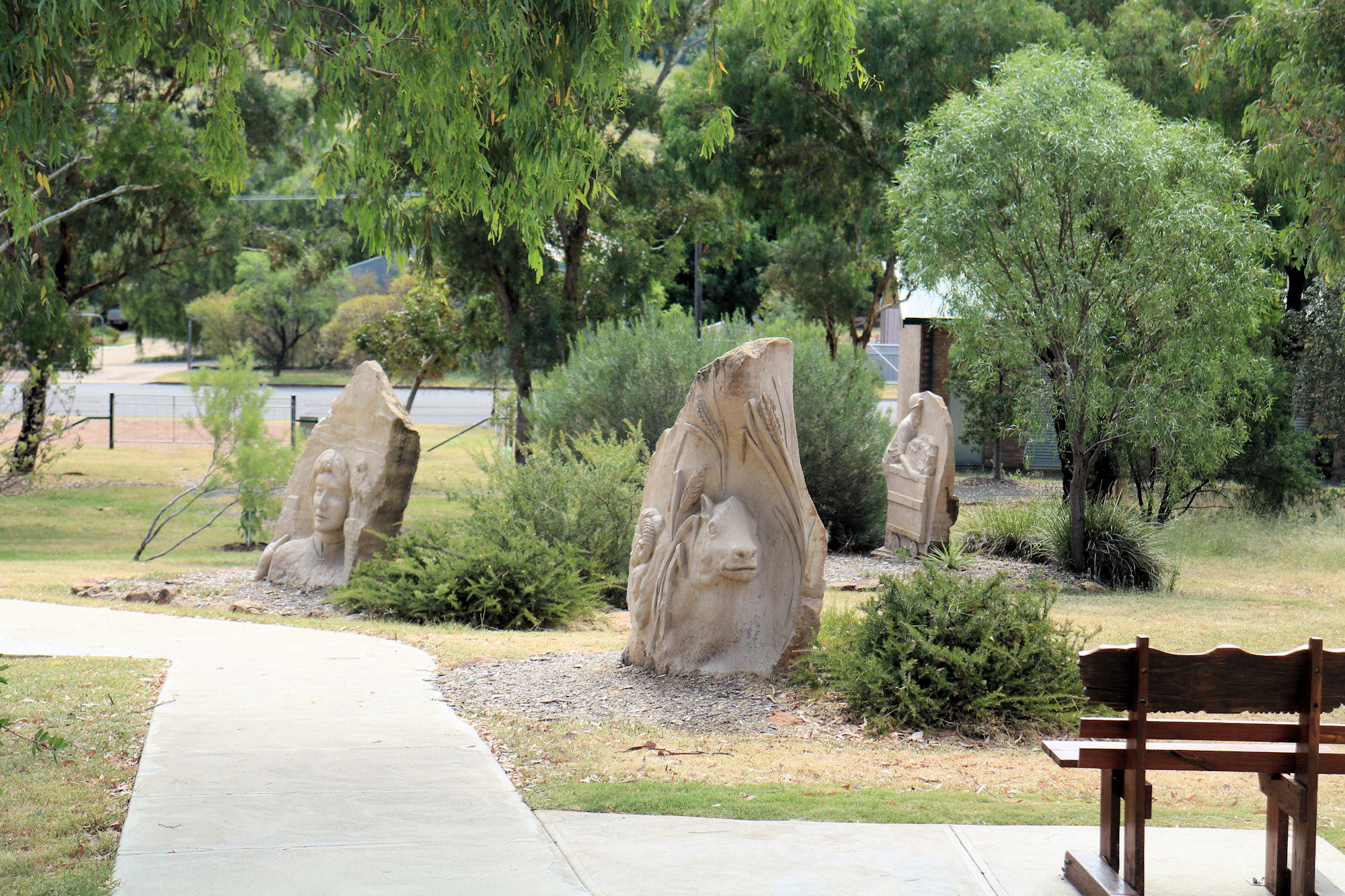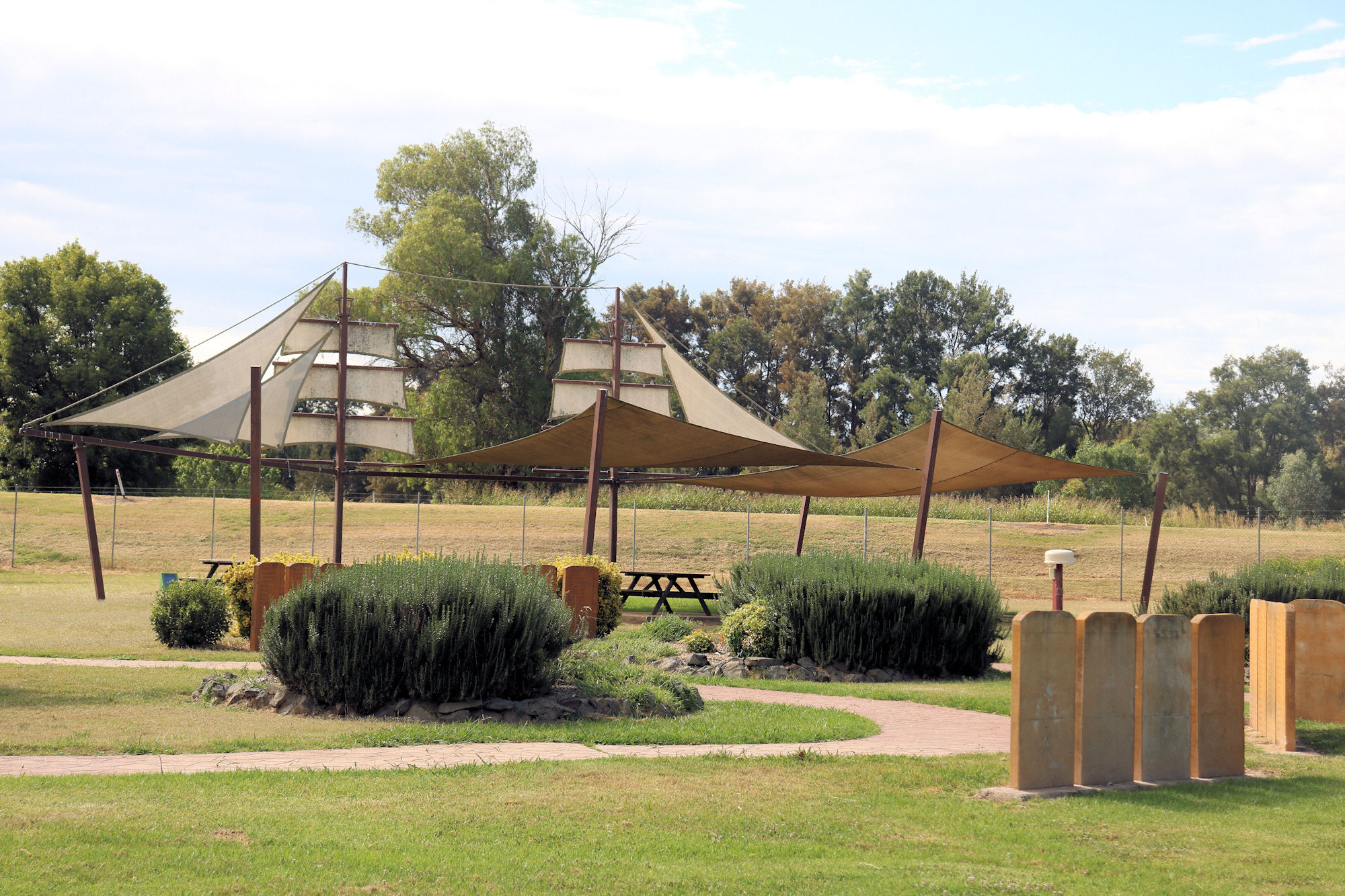Pensioners Hill Lookout and Sculpture Park
A beautiful place with views over Gunnedah, Pensioners Hill Lookout also has a sculpture park, which makes an even more interesting place to visit. The walkway through the park is named after Ailsa Iceton, a nurse who performed many charitable works in Gunnedah. During the Great Depression, she would bring meals to the residents of Pensioners Hill.
The park’s brick wall is constructed from bricks recovered from the demolition of a chimney used for a nearby mine, thereby incorporating its heritage value into the new park. A plaque near the entrance gate details the history of the chimney.
Kamilaroi Peoples
On entering the park, the first display on your right is a series of carved trees. These are a remembrance of the Kamilaroi People and their ancestral animals totemic beings. The Kamilaroi people’s lands extend from New South Wales to southern Queensland. They form one of the four largest Indigenous nations in Australia.
Pensioners Hill Lookout and Heritage Sculpture Park
The park contains four sculptures by Carl Merten and Joan Relke, with each depicting the heritage of the Gunneda area. The sculptures show:
- The Red Chief, a Kamilaroi man who lived in the area in the 18th century. He had a reputation as a warrior and wise leader of the Gunn-e-darr tribe.
- The Pioneer Woman, early settlers facing harsh environments, isolation and loneliness.
- Agriculture representing the rich grazing lands and crops across the Liverpool Plains.
- The Coal Miner labouring underground.
Carved on the back of each sculpture is the Great Rainbow Serpent of Aboriginal mythology, tying them all together.
Mining Heritage
Behind the rock sculptures is a display of three mine skips on rail tracks. This display sponsored by the CFMEU (the mine workers’ Union) pays tribute to the coal miners of the district. It not only commemorates the workers, but those who did not make it home, after working in the dangerous mine conditions.
These skips add to the mining heritage reflected in the entrance wall, which shows the importance of the industry in the districts past.

Mine Cars
Places to Relax
Placed throughout the park are beautifully carved seats, where you can sit and enjoy the park. If you want to relax under cover, a rotunda at the top of the hill is a great place to get out of the weather.
The View
The viewing platform gives a great view of Gunnedah. The silos and red roofed building in the photo is where the Dorothea Mackellar silo art sits. While there, look at the town from inside the rotunda, because it can be framed nicely by the entrance.
What Did We Think
If you are in Gunnedah, this is a great place to visit, because not only do you get a great view, but see great sculptures at the same time. It was nice to see the heritage of the districts tied together using aboriginal culture with the Great Rainbow Serpent.
To see what else there is to do in New South Wales, please see some of our other stories.
Our photos are available for purchase on































